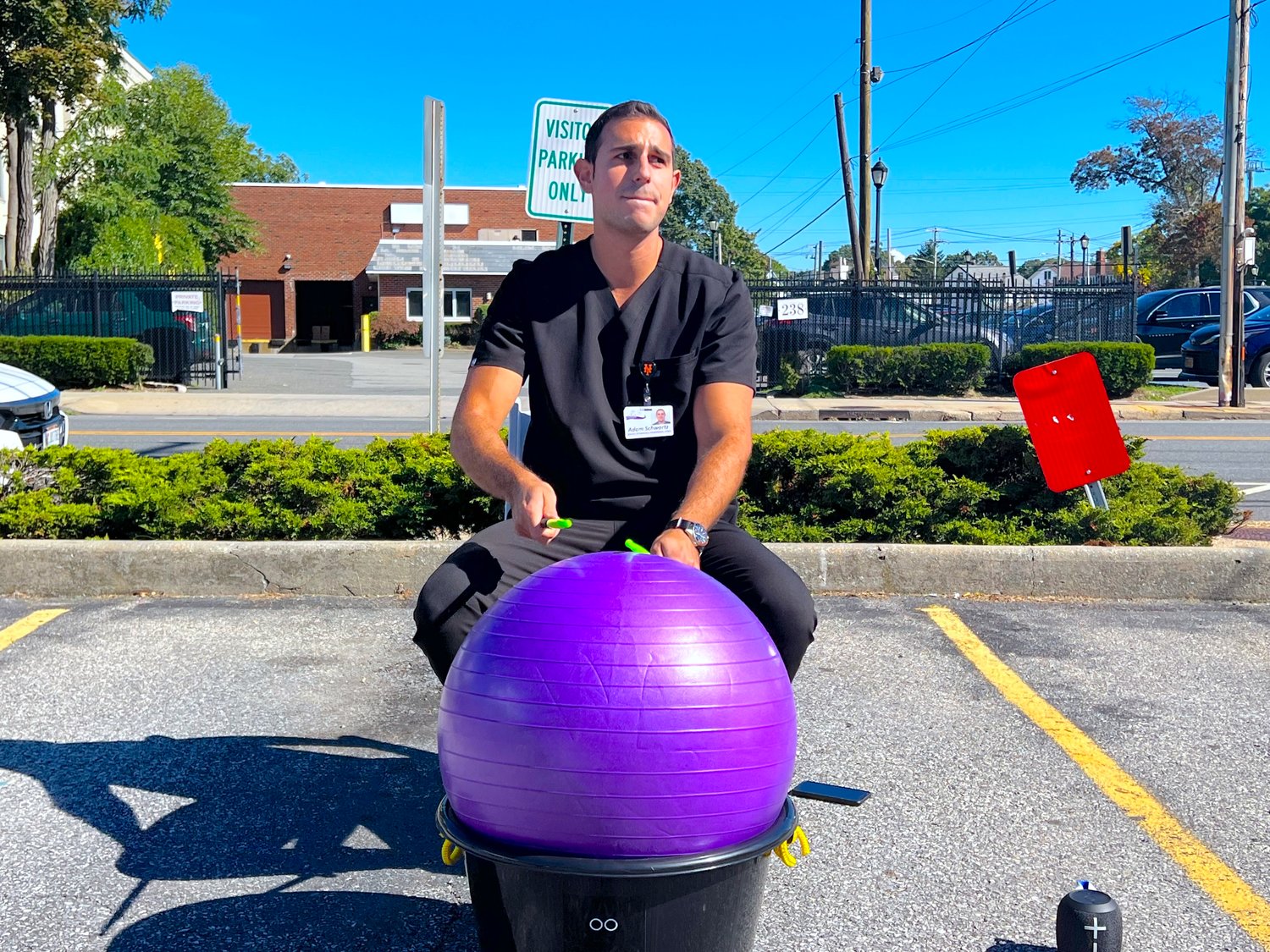Harmonicas, cardio drumming and more at health fair
The Lynbrook Restorative Health Fair drummed up enthusiasm for cardiopulmonary health and demonstrated an easy way to keep track of your well-being.
Community members participated in the Oct. 9 health fair by receiving flu shots, learning about scam prevention, having their blood pressure checked and strengthening their mental and physical condition.
Adam Schwartz, director of pulmonary rehabilitation at Lynbrook Restorative Therapy and Nursing, hosted an activity that quickly gets the blood flowing. Along with the exercises, an updated version of a pulse oximeter was unveiled.
The harmonica club made the fair energetic as people gathered to watch them play. Schwartz explained that playing the instrument is beneficial for your lungs. “Playing the harmonica improves COPD function,” Schwartz said. He teamed up with the president of the club to introduce this exercise to his pulmonary program as well as other enjoyable workouts.
“This year we also started cardio drumming,” Schwartz said. “It’s also a cardiac program too and we take a physio ball, blow them up, and play old school rock and roll.”
Cardio drumming mimics playing the drums as you use drumsticks to hit a fitness ball—placed in a bucket—to the rhythm of any song.
“The residents really enjoy the music,” Schwartz said. “We take requests, play them through the speakers, and play old songs that they’re familiar with.”
Schwartz explained it is a full body workout. “So you’re working on personal breathing as you do it, core musculature, arms, and I even have them incorporate their legs,” Schwartz said. “They just kick out their legs to the beat.”
Cardio drumming lasts anywhere from 45 minutes to an hour. Depending on the patients, there may be a break in between.
“I would say in a 45 minute to an hour session, they’re working 80 percent of the time,” Schwartz said. “In a single drumming session, you’re probably burning over 100 calories.”
The exercises increase your heart rate and oxygen levels, something that Lynbrook Rehabilitation urges patients to check regularly. Many patients are older so, being able to check their vital signs is very important. A new device was shown at the fair to help patients do this in one simple step.
Brian Cordts, director of the facility’s diabetes program, demonstrated how you can check your pulse almost instantaneously.
He displayed a pulse oximeter with a Bluetooth connection, which by putting it on your finger, it allows patients to check their vitals from the comfort of their home. This also lowers hospital readmissions.
“This device has an RPM program so it’s remote patient monitoring so they don’t always have to go into the office,” Cordts said. “I can keep and eye on them from home.”
Patients have to put on the pulse oximeter at least once daily and the results get sent to a nurse within 10 seconds.
“And if the oxygen is low or the heart rate is up, they’ll call their doctor,” Schwartz said.
Schwartz said when a patient gets discharged from a rehab center, the facility loses touch with them so this device was a way for Lynbrook Rehabilitation to “continue that continuity of care right from the rehab center back to the home.”
This new version of the pulse oximeter shows graphs displaying trends in a patient’s vitals with other data that can be seen via mobile device. “So you get the app with a pulse oximeter, you get heart rate, how many times your heart beats per minute,” Schwartz said.
The accuracy of the pulse oximeter is high, but there are a few factors that might limit the exactness of a patient’s vitals.
“It’s not going to be accurate if someone has poor circulation and it’s not going to be accurate if you have heavy nail polish.”
He discusses these factors with the patient and ways to make sure they get accurate readings.
“We educate patients on this before they leave,” Schwartz said. “So if you have circulatory issues, we tell patients they should run their hands under hot water or to use a hot pack.”
Along with cardio education at the fair, nurses provided flu shots.
“It’s usually a big draw as people want to get them,” community leader Denise Walsh said. “That’s why we did it earlier in the month because last year we did it later in the month and not only was it freezing, but a lot of people already had their flu shots.”
Although it is too early to indicate how bad the flu season will be this year, Lynbrook Rehabilitation still recommends getting the flu shot. One nurse at the event has seen “everything starting to come out” with mask restrictions easing. She has seen the flu and other sicknesses spread to more people without the protection of a mask.

 47.0°,
Mostly Cloudy
47.0°,
Mostly Cloudy 







